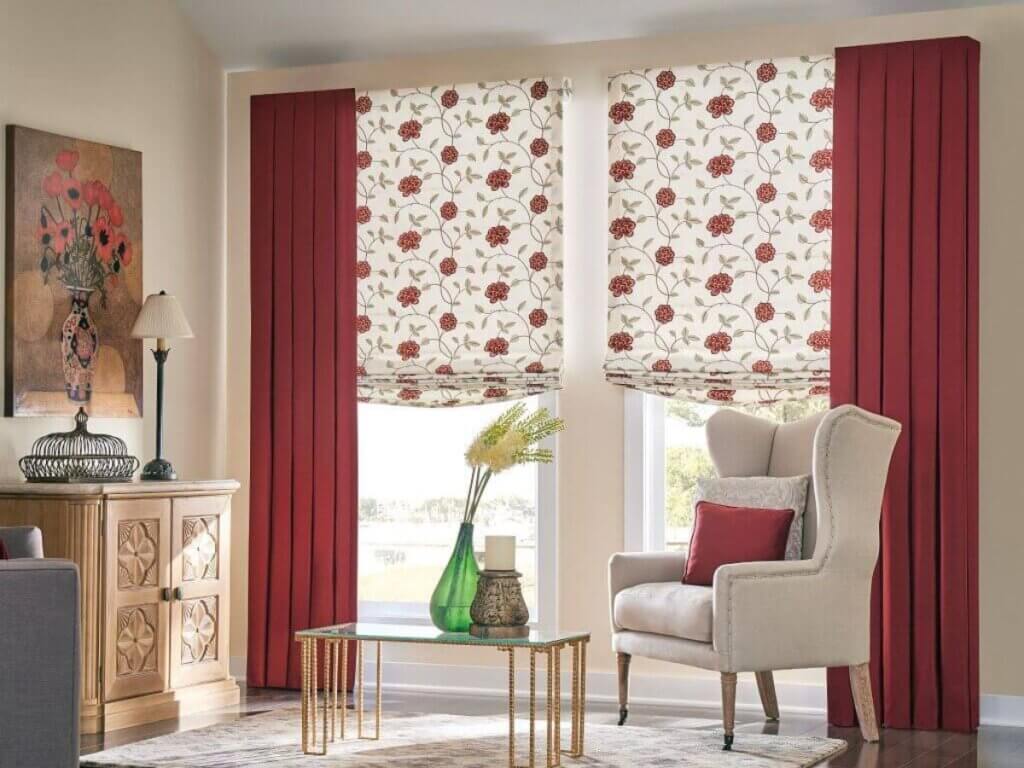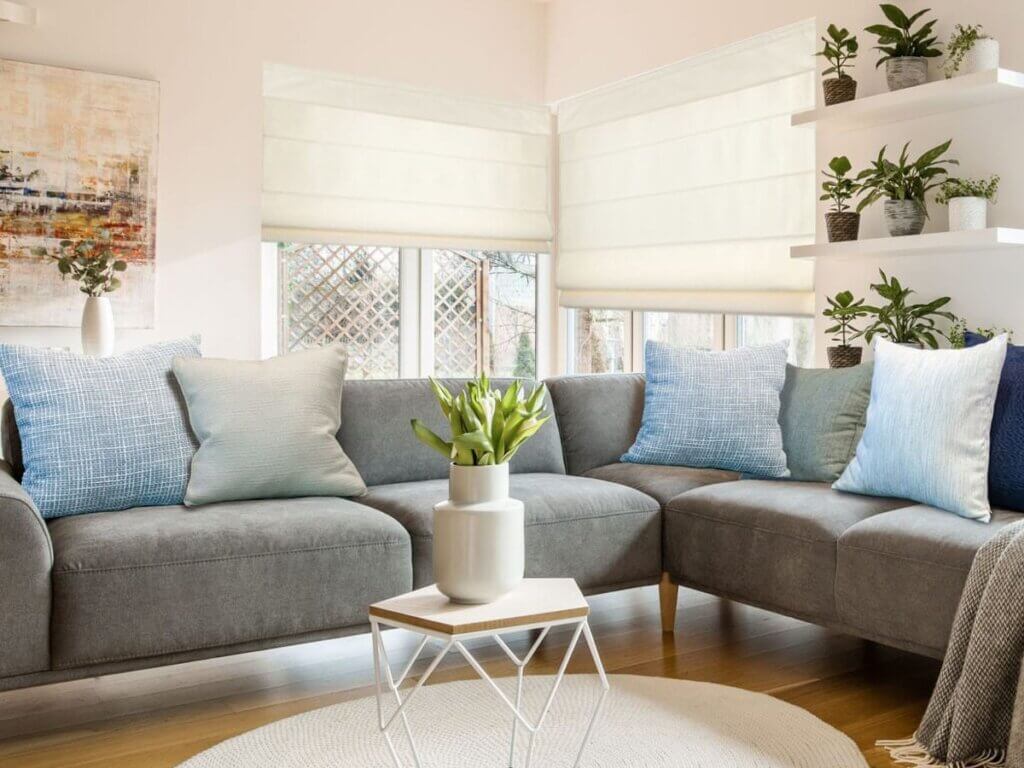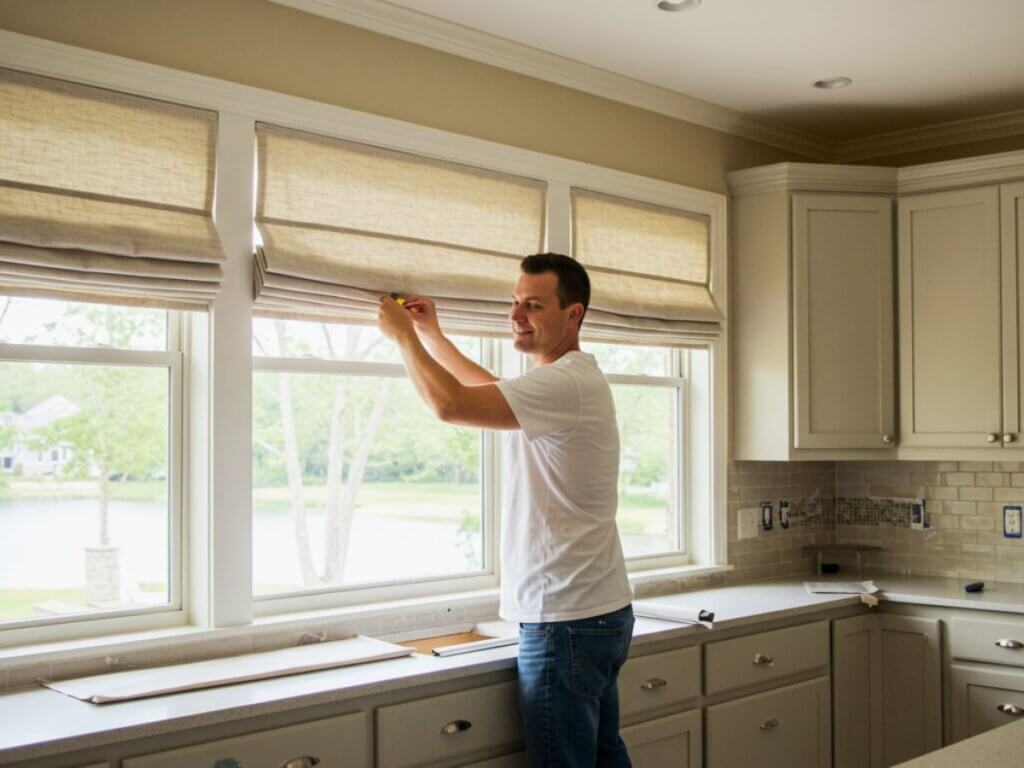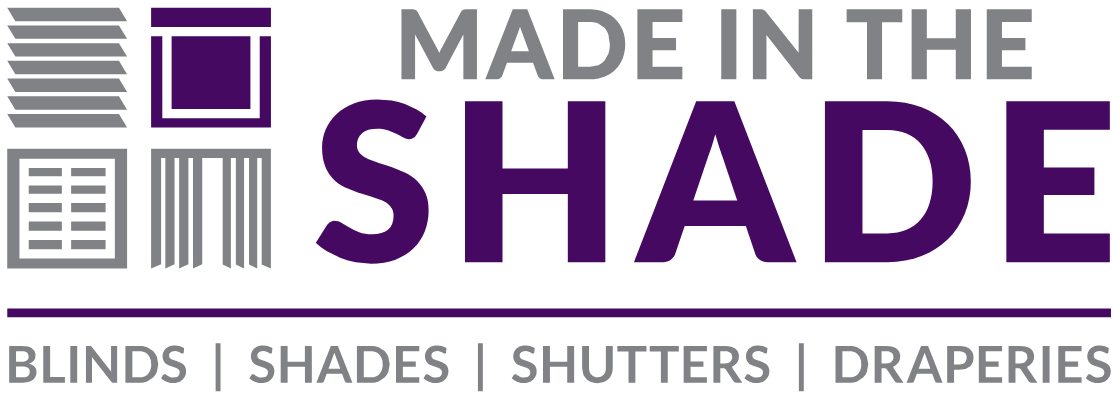Roman shades are a timeless window treatment that blends softness, functionality, and custom design. If you’re considering them for your home, you may be asking: What affects Roman shades cost? The truth is, several elements—from fabric choice to operating systems—play a role in how much you’ll invest.
This guide breaks down seven key factors that influence pricing, including size, material, lining, style, lift mechanism, labor, and brand. By the end, you’ll understand exactly what drives the cost of Roman shades and be better prepared to choose options that balance budget, beauty, and performance.
1. Window Size and Dimensions
The larger the window, the higher the cost of the Roman shades. Bigger shades require more fabric, lining, and hardware, and often call for additional reinforcement during construction. A standard bathroom window will cost less than a wide living room window or an oversized bay window. Custom designs for unique shapes, such as arched or angled windows, also increase the price due to added complexity.
2. Fabric, Material, and Designer Options

Fabric selection is one of the biggest cost drivers. Lightweight cottons, linens, or blends are generally more affordable, while premium silks, velvets, and designer fabrics require a higher investment. If you choose a patterned fabric, additional labor may be required for pattern matching, which ensures a seamless look. Trim details, custom embroidery, and luxury textiles also push the cost higher but provide a unique, tailored finish.
3. Lining and Interlining Choices
The lining you choose directly affects both function and cost. Standard linings protect fabrics from fading, while blackout linings create total darkness—perfect for bedrooms or media rooms. Interlining, an extra layer between the fabric and lining, adds insulation and helps the shade drape more luxuriously. While blackout and interlining options increase the cost, they also enhance performance, energy efficiency, and longevity.
4. Style, Fold Type, and Construction

Roman shades come in several fold types, each with its own price point:
- Flat fold: Sleek and modern, often the least expensive.
- Hobbled fold: Soft cascading folds, requiring more fabric and labor.
- Relaxed fold: A casual, curved bottom that demands precision tailoring.
More complex constructions typically cost more because of the labor and craftsmanship involved. For example, a hobbled fold uses significantly more fabric than a flat fold, which directly impacts cost.
5. Lift Mechanisms and Operating Systems
How you raise and lower your shades also determines cost. Corded options are usually the most budget-friendly, while cordless systems provide child and pet safety at a higher price.
Motorized Roman shades offer ultimate convenience, with remote control or smart-home integration, but require specialized hardware and professional installation. Investing in motorization can raise the upfront cost, but it often increases long-term satisfaction and ease of use.
6. Labor, Installation, and Complexity

Labor and installation are essential considerations when evaluating Roman shades cost. Custom construction involves skilled craftsmanship to ensure proper folds, alignment, and hardware placement.
Installation for standard windows may be straightforward, but oversized or uniquely shaped windows require more time and precision, resulting in increased labor fees. Professional installation also ensures smooth operation and prevents costly mistakes.
7. Brand, Quality, and Hardware
Finally, brand reputation and quality of materials influence pricing. Higher-end brands use durable fabrics, stronger lift mechanisms, and longer-lasting hardware, all of which contribute to performance and longevity. While lesser-known options may be cheaper upfront, they may not offer the same level of durability or warranty support. Investing in a trusted brand often means fewer repairs and replacements in the long run.
FAQs About Roman Shades Cost
1. Are Roman shades more expensive than other window treatments?
Roman shades can be more expensive than some basic options due to the high-quality fabric, skilled craftsmanship, and customization options available. However, they are often less costly than full drapery panels while offering a similarly polished look. Their versatility and design range can make them a cost-effective choice depending on your goals.
2. How much do motorized Roman shades cost compared to standard ones?
Motorized Roman shades typically cost significantly more than corded or cordless styles due to the hardware and technology required. The price can vary depending on whether the shades are operated by remote control, a wall switch, or integrated into a smart home system. Although the upfront investment is higher, many homeowners find the convenience to be worth the added cost.
3. Do blackout linings always add to the price?
Yes, blackout linings usually increase the cost of Roman shades because they involve additional materials and specialized construction. The price difference is often modest, but the benefits—such as improved sleep, light control, and energy efficiency—make it a worthwhile upgrade for bedrooms and media spaces.
Choose Roman Shades That Fit Your Needs
The cost of Roman shades depends on a combination of size, material, lining, style, lift system, labor, and brand quality. Each decision—from fabric to fold type—affects both price and performance. By weighing these factors carefully, you’ll be able to select shades that meet your style preferences, functional needs, and budget.
Book Your Consultation Today
Ready to explore Roman shades for your home in Selbyville, MD, or the surrounding Maryland and Delaware beaches? Contact MITS Eastern Shore to schedule an in-home consultation and discover custom options tailored to your windows.


